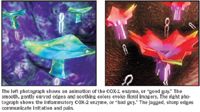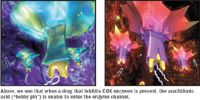How to Wow the Docs
Pharmaceutical Executive
Talk to MDs in their language and build a better brand
Pharmaceutical marketers spend enormous amounts of time and effort defining product positioning and building brand characteristics. But, given the fact that pharmaceutical products are marketed to physicians, should we not devote similar time and effort developing the science brand?

Michael Shaw
Educational research has shown that the visual sense accounts for up to 90 percent of how we acquire information, a finding that is certainly not lost on advertisers. But while physicians have many characteristics in common with other consumers, they are a distinct subpopulation with a unique perspective and a specific way of processing information that is shaped by decades of scientific training and experience. The language of science is part of the social anthropology of physicians. In order to communicate effectively with physicians, one should consider how they process information, view body processes, and envision pharmacologic principles.

Charles Goetz
Physicians are trained to view human physiology as a complex but inherently logical system of homeostatic balance that is far more intricate, sophisticated, and elegant than even the most elaborate computer system. A fundamental rule of nature is that body processes contain complex "yin and yang" systems of balance. Given their training, physicians anticipate this form of relationship when learning about new ideas in physiology and pharmacology. Novel ideas make intuitive sense to physicians when presented through the perspective of homeostasis and evolutionary drive. The most effective science branding takes advantage of this view of nature and presents ideas in a way that is consistent with the physician's view of how the body works.
This principle of using ideas that are familiar to physicians can be applied to almost every product area and can help to create a clear, concise, and sustainable impression. Just as lexicon development is part of launch preparation, a similar process can also be applied to the process of building your science brand.

In the top illustration, the diagram of arachidonic acid has a bobby pinâlike structure. The shape was immediately recognizable to many physicians and became a foundational element in the designs. The bottom image displays rudimentary sketches for what eventually became fully realized, beautiful animations.
The Challenge
Professional marketers must use technology and visual design to make the science come alive for physicians. The market preparation prior to the introduction of the first COX-2 inhibitor was a good example of how visual design can be used to make complex ideas simple, clear, and intuitive. COX-2 is an inflammatory enzyme that produces prostaglandins that cause pain and swelling.
The idea for developing a COX-2 inhibitor was based upon the discovery that the COX enzyme has two different forms, COX-1 and COX-2. Because this was new science at the time, an enormous amount of education had to be accomplished well in advance of product launch. The science was based upon arachidonic acid metabolism, a topic that is about as unexciting as they come.

Essentially, marketers needed to create professional promotional materials that said, "COX-1 is important for normal health. COX-2 produces inflammatory prostaglandins that cause pain and inflammation. Aspirin and NSAIDs block both the good and bad COX enzymes. COX-2 inhibitors spare the normal enzymes while blocking the inflammatory enzymes."
The Solution
The designs for the COX enzymes were developed in collaboration with the scientist who discovered the two forms of this enzyme. His work showed the COX enzymes to be funnel-like structures with a central enzymatic channel through which arachidonic acid enters and prostaglandins emerge.

Considerable artistic license was used to create the enzyme designs. The goal was to clearly communicate the fact that COX-1 is a "good guy" and is associated with normal body functions. The use of smooth edges with COX-1 makes the design look almost floral. On the other hand, COX-2 is the "evil twin" associated with disease. It was given angular shapes that convey a sense of danger. The rounded shapes of COX-1 are supported by the use of soft blues and greens to create a soothing aquatic motif associated with normality and health. COX-2's cold colors and jagged surfaces help to convey the intuitive sense that the enzyme is not part of a healthy process. These creative devices support the scientific and marketing messages. In the top two images on the left, the bobby pin shape of the prostaglandins can be seen leaving the tops of the enzymes.
Nonsteroidal anti-inflammatory drugs are molecules that bind nonselectively to both enzymes. This idea is reflected in the relatively formless and indistinct designs created for the NSAIDs. The impression is that it does not require a high degree of specificity to block both of these enzymes. This makes the NSAIDs and aspirin seem less sophisticated. On the other hand, the key idea behind a COX-2 inhibitor is that it enjoys selectivity because it targets the structural difference between the two enzymes. This specificity is reflected in both the sophistication of the drug and its specific lock-and-key binding to COX-2.

Adopting the language of science allows the opportunity to communicate more effectively and relevantly with physicians. The most effective product launches spend considerable effort investigating the science for new opportunities for product differentiation. Using effective visual design that builds upon a firm understanding of the science helps to build a lasting impression of the product and to bring the product and its science to life.
Michael Shaw is president of Shaw Science Partners. He can be reached at mshaw@shawscience.com
Charles Goetz is VP and creative director of Shaw Science Partners. He can be reached at cgoetz@shawscience.com

The Misinformation Maze: Navigating Public Health in the Digital Age
March 11th 2025Jennifer Butler, chief commercial officer of Pleio, discusses misinformation's threat to public health, where patients are turning for trustworthy health information, the industry's pivot to peer-to-patient strategies to educate patients, and more.
Navigating Distrust: Pharma in the Age of Social Media
February 18th 2025Ian Baer, Founder and CEO of Sooth, discusses how the growing distrust in social media will impact industry marketing strategies and the relationships between pharmaceutical companies and the patients they aim to serve. He also explains dark social, how to combat misinformation, closing the trust gap, and more.